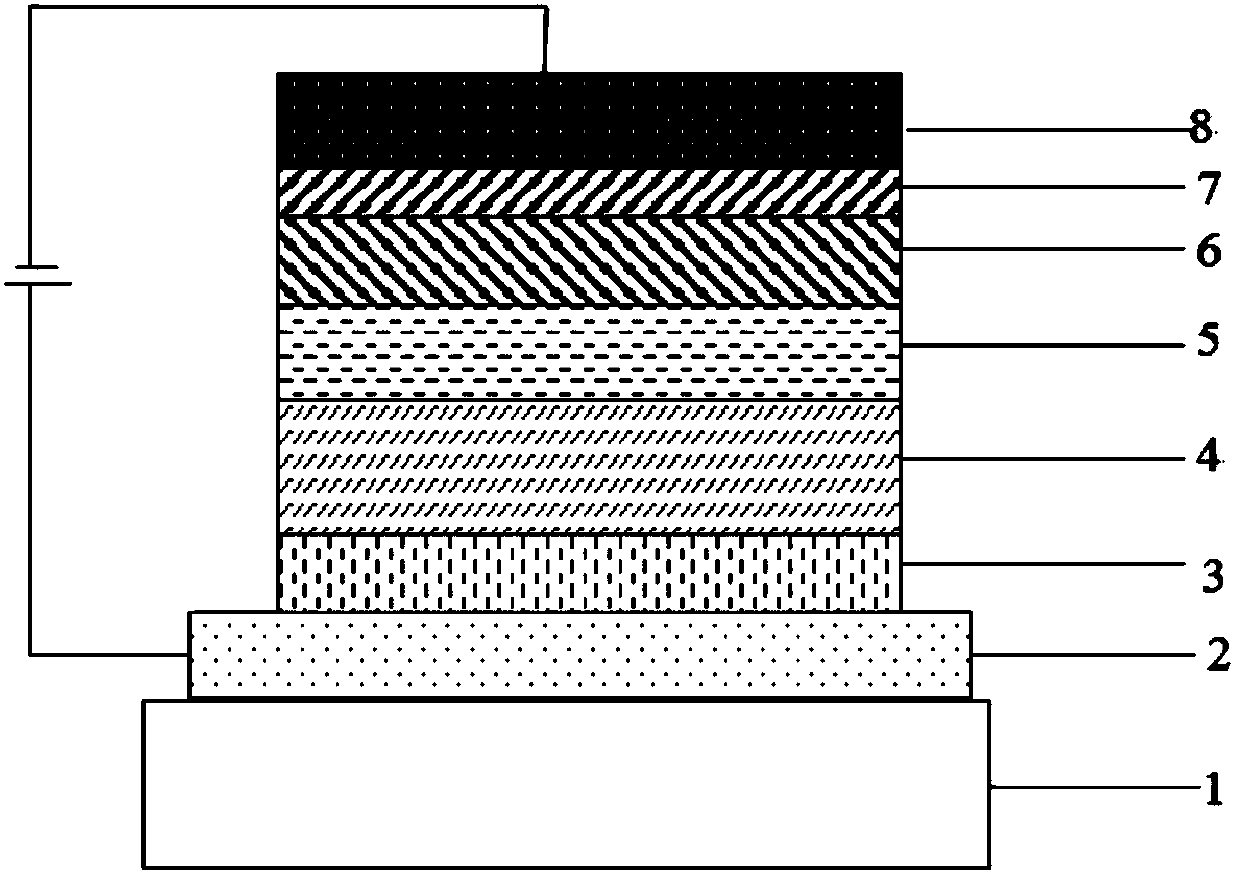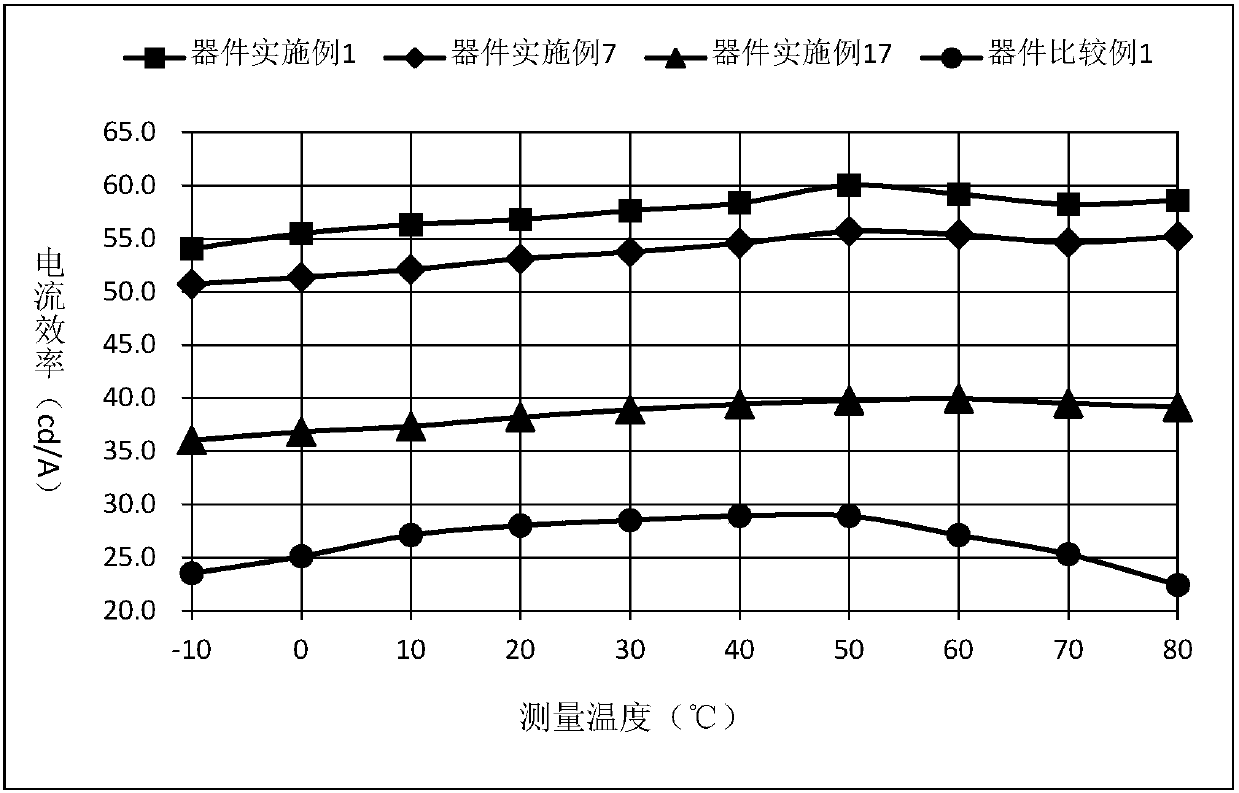Compound with spirodimethylanthracene-fluorene and nitrogenous six-membered heterocycles and application thereof in organic light-emitting devices
A technology of dimethylanthracene fluorene and six-membered heterocyclic ring, which is applied in the fields of electric solid-state devices, electrical components, organic chemistry, etc., can solve different problems and achieve the effects of blocking energy loss, facilitating energy transfer, and good application effects
- Summary
- Abstract
- Description
- Claims
- Application Information
AI Technical Summary
Problems solved by technology
Method used
Image
Examples
Embodiment 1
[0079] Embodiment 1: the synthesis of compound 3:
[0080]
[0081] In a 250mL three-necked flask, feed nitrogen, add 0.01mol of raw material A1, 150ml of THF, 0.015mol of intermediate A1, 0.0001mol of tetrakis(triphenylphosphine) palladium, stir, and then add 0.02mol of K 2 CO 3 Aqueous solution (2M), heated to 80°C, refluxed for 15 hours, sampled and plated, the reaction was complete. Cool naturally, extract with 200ml of dichloromethane, separate layers, dry the extract with anhydrous sodium sulfate, filter, rotate the filtrate, and purify through a silica gel column to obtain the target compound with a HPLC purity of 99.1% and a yield of 77.3%. Elemental analysis structure (molecular formula C 49 h 35 N 3 ): theoretical value C, 88.39; H, 5.30; N, 6.31; test value: C, 88.47; H, 5.36; N, 6.35. ESI-MS(m / z)(M + ): The theoretical value is 665.28, and the measured value is 665.34.
Embodiment 2
[0082] Embodiment 2: the synthesis of compound 13:
[0083]
[0084] In a 250mL three-necked flask, nitrogen was introduced, 0.01mol of raw material A2, 150ml of THF, 0.015mol of intermediate A1, 0.0001mol of tetrakis(triphenylphosphine) palladium were added, stirred, and then 0.02mol of K 2 CO 3 Aqueous solution (2M), heated to 80°C, refluxed for 15 hours, sampled and plated, the reaction was complete. Cool naturally, extract with 200ml of dichloromethane, separate layers, dry the extract with anhydrous sodium sulfate, filter, rotate the filtrate, and purify through a silica gel column to obtain the target compound with a HPLC purity of 99.1% and a yield of 77.3%. Elemental analysis structure (molecular formula C 49 h 35 N 3 ): theoretical value C, 88.39; H, 5.30; N, 6.31; test value: C, 88.47; H, 5.36; N, 6.35. ESI-MS(m / z)(M + ): The theoretical value is 665.28, and the measured value is 665.35.
Embodiment 3
[0085] Embodiment 3: the synthesis of compound 25:
[0086]
[0087] The preparation method of compound 25 is the same as that in Example 1, except that raw material A1 is replaced by raw material A3, and intermediate A1 is replaced by intermediate A2.
[0088] Elemental analysis structure (molecular formula C 55 h 39 N 3 ): theoretical value C, 89.04; H, 5.30; N, 5.66; test value: C, 89.11; H, 5.28; N, 5.65. ESI-MS(m / z)(M + ): The theoretical value is 741.31, and the measured value is 741.39.
PUM
| Property | Measurement | Unit |
|---|---|---|
| Thickness | aaaaa | aaaaa |
| Thickness | aaaaa | aaaaa |
| Thickness | aaaaa | aaaaa |
Abstract
Description
Claims
Application Information
 Login to View More
Login to View More - R&D
- Intellectual Property
- Life Sciences
- Materials
- Tech Scout
- Unparalleled Data Quality
- Higher Quality Content
- 60% Fewer Hallucinations
Browse by: Latest US Patents, China's latest patents, Technical Efficacy Thesaurus, Application Domain, Technology Topic, Popular Technical Reports.
© 2025 PatSnap. All rights reserved.Legal|Privacy policy|Modern Slavery Act Transparency Statement|Sitemap|About US| Contact US: help@patsnap.com



